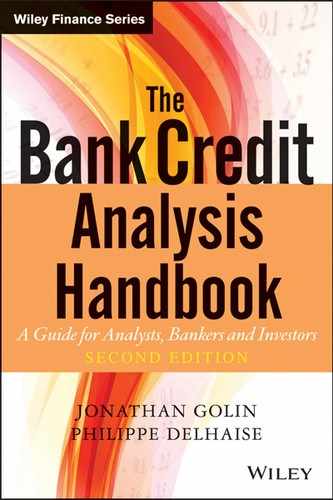Book Description
A hands-on guide to the theory and practice of bank credit analysis and ratings
In this revised edition, Jonathan Golin and Philippe Delhaise expand on the role of bank credit analysts and the methodology of their practice. Offering investors and practitioners an insider's perspective on how rating agencies assign all-important credit ratings to banks, the book is updated to reflect today's environment of increased oversight and demands for greater transparency. It includes international case studies of bank credit analysis, suggestions and insights for understanding and complying with the Basel Accords, techniques for reviewing asset quality on both quantitative and qualitative bases, explores the restructuring of distressed banks, and much more.
Features charts, graphs, and spreadsheet illustrations to further explain topics discussed in the text
Includes international case studies from North America, Asia, and Europe that offer readers a global perspective
Offers coverage of the Basel Accords on Capital Adequacy and Liquidity and shares the authors' view that a bank could be compliant under those and other regulations without being creditworthy
A uniquely practical guide to bank credit analysis as it is currently practiced around the world, The Bank Credit Analysis Handbook, Second Edition is a must-have resource for equity analysts, credit analysts, and bankers, as well as wealth managers and investors.
Table of Contents
- Cover
- Contents
- Title
- Copyright
- Preface to the New Edition
- Chapter 1: The Credit Decision
- Chapter 2: The Credit Analyst
- Chapter 3: The Business of Banking
- Chapter 4: Deconstructing the Bank Income Statement
- Chapter 5: Deconstructing a Bank’s Balance Sheet
- Chapter 6: Earnings and Profitability
- Chapter 7: Asset Quality
- Chapter 8: Management and Corporate Governance
- Chapter 9: Capital
- Chapter 10: Liquidity
- Chapter 11: Country and Sovereign Risk
- Chapter 12: Risk Management, Basel Accords, and Ratings
- Chapter 13: The Banking Regulatory Regime
- Chapter 14: Crises: Banking, Financial, Twin, Economic, Debt, Sovereign, and Policy Crises
- Chapter 15: The Resolution of Banking Crises
- About the Authors
- Index
